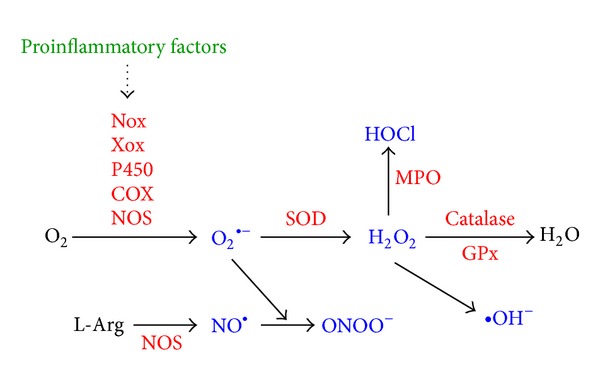Figure 3.

Major pathways of reactive oxygen (nitrogen) species generation and metabolism. Several proinflammatory factors can stimulate O2 ∙− generation through activation of several specialized enzymes, such as the Nox, Xox, P450, COX, or NOS. SOD then converts the O2 ∙− to H2O2, which is then converted into the highly reactive ∙OH or has to be rapidly removed from the system that is generally achieved by catalase or peroxidases, such as the GPx. Further, O2 ∙− can be either converted into ROO∙ or can react with NO to yield ONOO−. NO is mostly generated by L-Arg via NOS. H2O2 can be converted to HOCl by the action of MPO. myeloperoxidase. O2: molecular oxygen; H2O: water; O2 ∙−: superoxide radical anion; ∙OH: hydroxyl radical; ROO∙: peroxyl radical; H2O2: hydrogen peroxide; ONOO−: peroxynitrite; NO: nitric oxide; L-Arg: L-arginine; HOCl: hypochlorous acid.
